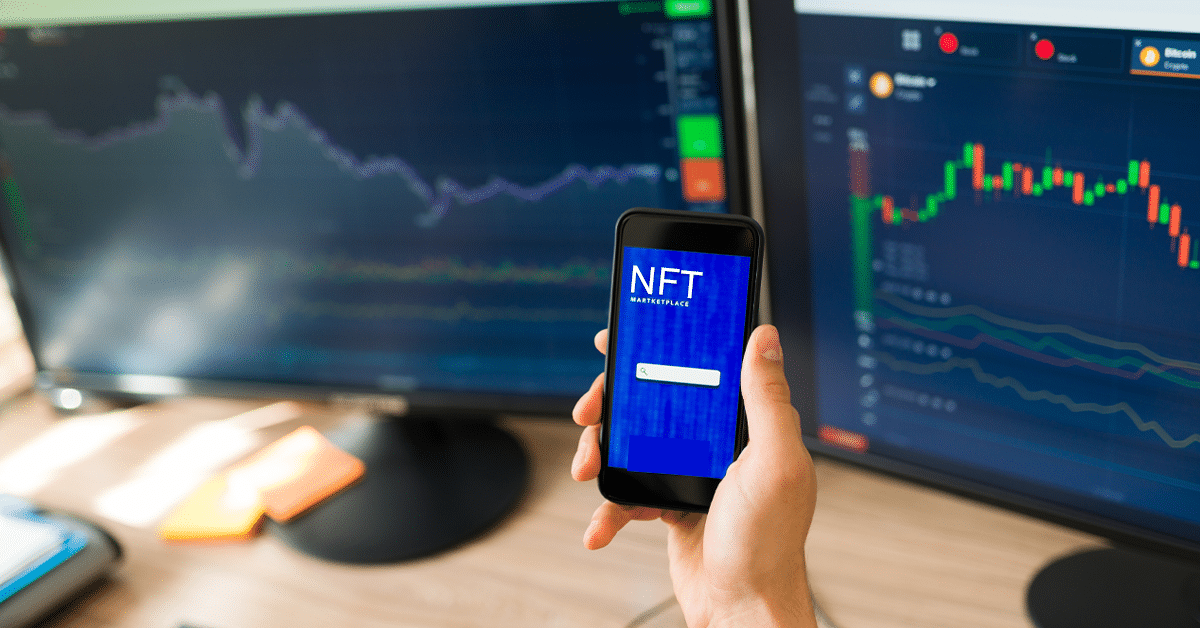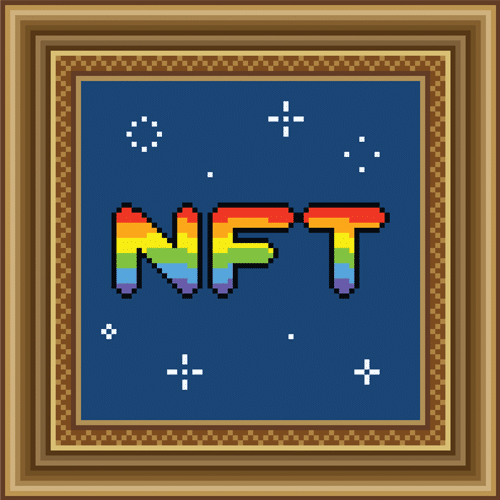What are NFTs?
May 5, 2022 Category: Pop Culture
You may have heard about NFTs before, the boom surrounding this new way of selling digital assets started around March 2021. However, they have been around since 2014. The NFT scene evolved rapidly over the past year and we thought it would be helpful to breakdown exactly what NFTs are, whether or not they are a scam, and what their future could hold.
Defined: NFT stands for Non-Fungible Token
Non-fungible means it cannot be replaced with something else – it is unique. On the other hand, if something is fungible it can easily be traded for another thing and it will have the same value. For example, a bitcoin or even a regular loonie is fungible. A one-of-a-kind trading card is non-fungible and if you trade it, you would have a different card. A NFT is essentially a one of a kind digital trading card.
NFTs could be anything digital and the current most popular type of NFTs is digital art. Some people have even sold their tweets as NFTs. Much of the conversation around NFTs is that it is a new form of fine art collecting but for the digital age.
Can You Just Download the Digital Art and Have Your Own Copy?
Yes, you can copy a digital file as many times as you want, including the art that is part of an NFT.
NFTs give you something that cannot be copied: the ownership of the digital art. The artist retains the copyright and reproduction rights just like with physical artwork. In terms of art, anyone can buy a print of the Mona Lisa but only one person (or museum) can own the original.
NFTs as a Way to Claim Ownership of a Digital File
The Internet is essentially a giant copy machine – any digital file can be duplicated an infinite number of times, and every copy is the same as the original. This is great for reproducing digital objects but it is horrible for making them scarce. If you were a digital artist and wanted to make only a few copies of your digital artwork your options were not great before the rise of NFTs.
A few years ago, people realized that blockchains (the databases that power Bitcoin and other cryptocurrencies) could create unique, uncopiable digital files. These files were simply entries on a public database and anyone could verify the owner and track any trades made. This prompted the creation of NFTs.
The entries on the public database that state you own an NFT are essentially a certificate of authenticity. Certificates of authenticity are used to prove the ownership of things like artwork, memorabilia, and sculptures. If you owned a rare sculpture and someone copied it or broke into your house to steal it, this certificate would prove that you are the real owner.
Why Are They Valuable?
No one is arguing that NFTs are valuable because they are useful. A lot of the value is created from speculation and bragging rights. Defenders of NFTs say that people buy things that are useless all the time for a variety of reasons – to feel good, to show off to their friends, or to signal membership to a group.
One could argue that NFTs are a form of social currency that make people feel more interesting.
Will They Eventually Become Worthless?
In January, the estimated size of the NFT market was $50 billion dollars. However, the market is showing signs of cooling. In January, the average price was $6800 and now the average price is below $2000. The drop seems to be caused by a variety of factors including inflation, the war in Ukraine, and increased regulatory scrutiny. Experts have predicted that many NFTs will eventually cause investors to lose money. This makes them quite controversial among the crypto community.
As the market cools, there has been an increasing focus on creating utility. Some NFTs will also come with concert tickets, signed memorabilia or early access to releases so that there is something of value included even if the NFT’s value decreases.
Are There Frauds in the NFT Market?
Yes, there have been tons of frauds in the NFT market. Sometimes developers will abandon a project and run away with the buyer’s money. There are also several examples of “whitelisting” where groups of people are invited to buy exclusive NFTs before they are available to the public. The insiders will get the NFTs for a lower price and then sell them for a profit when they are released.
Stealing is also quite popular in the NFT market. Some hackers have convinced owners of NFTs to give up their passwords to access their NFTs. Other people will steal the work of artists and sell it as “official” versions without their permission.
What Are Some Examples of Famous NFTs
One of the most famous NFTs is the Nyan Cat NFT, which sold for US $590,000. The Nyan Cat meme started on YouTube and quickly became an Internet sensation.
Crypto Punks are also very popular. There are 10000 uniquely generated Crypto Punk characters created through the Ethereum blockchain. Their history dates back to 2017 when a blockchain was added to the files to track their ownership.
Why Do People Still Support NFTs?
- Creators see NFTs as a way to de-centralize the Internet. Most creators have to put their work on giant platforms like Spotify, Facebook, and YouTube where they make a small amount of money per stream or view. If they turn their work into NFTs they could sell unique digital assets directly to their fans and keep a larger amount of money for themselves.
- The Metaverse is growing and that means more interactions and experiences will take place in digital worlds, rather than offline in physical spaces. Kids continue to spend money on Fortnite skins and Roblox accessories. It’s expected that people will start spending more money on digital assets and many of these digital assets will take the form of NFTs.
The Future of NFTs
Despite the NFT market declining in recent months, companies like Starbucks have mentioned creating digital collectables using NFTs for their customers to purchase as part of their loyalty program. As the Metaverse and Web 3.0 evolves, NFTs will likely be a big part of that evolution. They could include things like keys to online communities and events, assets for use in video games, and ownership of digital identities and usernames.
Currently the NFT market is extremely risky due to a lack of regulation. Some artists and creators see NFTs as a way to make money from their art. Many investors use NFTs to obtain bragging rights to say that they own the original content or they simply speculate that the asset will increase in value. At their most basic level, NFTs allow people to create and trade scarce digital objects. As the world becomes immersed in the Metaverse, NFTs could become more prominent.
Keep your home connected to the Internet with Execulink!





